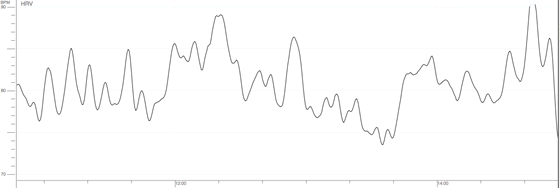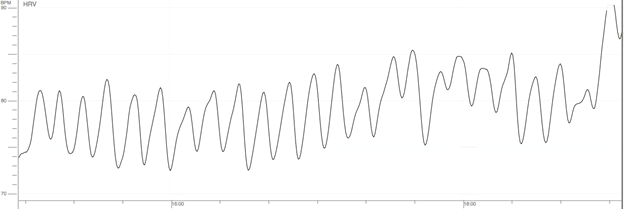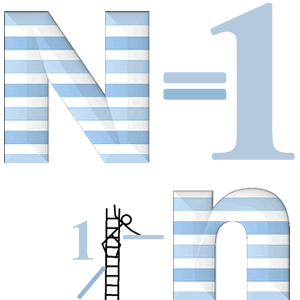 Australia can take some pride in its list of inventions and inventors who have made a name for themselves around the world.
Australia can take some pride in its list of inventions and inventors who have made a name for themselves around the world.
In terms of aviation, those black (actually orange) boxes which record flight deck conversations and inflight parameters originated in Australia. They have now extended to use in trains and trucks, wherever complex technology and the human operator intersect.
Staying with aviation for a moment, a lighting system adopted worldwide for airport approaches also originated in Australia. Known as T-VASIS, it guided pilots visually to an accurate runway approach where instrument landing systems (ILS) were not available. Pilots were literally able to recalibrate their approach angle on the fly according to this lighting system. I am somewhat proud to say that one of its inventors, Ron Cumming, was my second year psychology professor, and his son Geoff, whom I also know, is changing the way the science of psychology is using statistical analysis.
There is another Aussie device that I want to mention in this section on recalibration. It was invented in Adelaide by Lance Hill, and is known as the Hill’s Hoist.
It was a clothes drying contraption which took advantage of Australia’s quarter acre block for suburban housing, where one could install such a device. It stood in contrast to many European outdoor clothes drying facilities.
The Hills Hoist allowed large wet sheets to be loaded on its horizontal wires, and then the entire array hoisted higher into the air. The array could be rotated when being loaded, and this rotation would continue in the wind and sun. When dry, the array could then be lowered and emptied, ready for ironing.
What made the Hills Hoist so useful was the means by which this raising and lowering was accomplished. Fastened to the vertical pole was a handle and set of gears, which could ratchet up and down with ease, despite the array carrying many kilograms of wet washing. The enclosed gearing made this easy due to a patented “crown wheel-and-pinion winding mechanism”. The array could be raised and lowered in discrete movements, and would not fall back to its lowest position under the weight of the laundry.
Now by this time you night be asking what the point is of showing you a Hills Hoist?
Because for many people, it’s a good analogy for how their anxiety ratchets up over the years. Untreated, it can either mature out and be gone for ever, or more likely, it generalises to effect other areas of your life. This is because there is not an exclusive set of feelings and sensations just to do with flying – they can also occur in other domains where the same vigilance or alarm system is triggered. Like the Hills Hoist, until you voluntarily bring down the hoist by knowing how to reset the gears, your anxiety can stay up high, swirling around in the breeze just like the Hills Hoist.
And just like you need to read the operating instructions for the Hoist – its raising and lowering as well as its maintenance – you also need to understand the operating instructions for your fear response in order to bring it down to more useful levels after it’s done its job of alerting you and keeping you safe.
There are a variety of ways to recalibrate the fear response. Think of it as overhauling the gears in the Hills Hoist so they turn smoothly and do their job. To some extent, when medication for anxiety is prescribed, think of it as an effort to loosen up the gears, realign them, lubricate the pinions, and so on. I don’t think of its use as realigning a “chemical imbalance”, as some in the pharmaceutical industry have asserted. There remains scant evidence for this assertion. I also tend to think of applying medication to a blocked drain or sticky hinge, where a dose of WD40 can loosen things up. You still need to check the drain or the door, and ensure proper maintenance.
In terms of anxiety and depression, “maintenance” can consist of regular exercise, good nutrition, social networks, meaningful work or volunteerism, and sufficient pleasurable experiences to counteract the daily “little murders” we experience, as the satirist Jules Feiffer once wrote.
Part of that maintenance nowadays will also involve brain training exercises to promote mental flexibility and adaptability.
What else does the available research say can assist the recalibration process?
Think of the body’s alarm system as similar to your house or car alarm. Movement within will usually trigger the alarm to go off. I have some cheap IP cameras installed which can send a live feed to my iPhone if I log in via an app, and can be set to send an email with images if it detects movement. It does this by noting any changes to light entering the camera’s photosensor. The app installed on my iPhone allows me to change its sensitivity so that either more light or less light will trigger it to send an email.
On really windy days, I get a lot of false alarms due to the garden trees’ branches moving, so I log in and decrease the sensitivity.
Changing your alarm system’s sensitivity
You can also “log in” to change your alarm bells’ sensitivity too. You do this initially by altering your breathing rhythms. The purpose is to maintain the correct pH level in your bloodstream, determined by levels of oxygen (needed for metabolic processes) and carbon dioxide (the waste product of your metabolism). It turns out that your brain stem – the set and forget part of your brain which monitors and controls blood pressure, digestion and so on – is exquisitely sensitive to carbon dioxide levels.
Too much or too little will set off a chain reaction of events leading to a flight or freeze reaction. If you breathe too rapidly, taking very shallow chest breaths like you are panting, it’s as if you’re preparing to escape danger by running.
On the other hand, holding your breath will lead to a freeze reaction.
Neither hyperventilation or holding your breath will allow you to think clearly in the heat of the moment.
What’s the number one hack for recalibrating?
The number one “hack” for physiological recalibration of the fear response, to either reset the sensitivity of the alarm or to reset it to normal (on, and monitoring) is diaphragmatic breathing.
Athletes performing events which see them needing to quickly reduce their heart rate and focus on low energy events quickly learn how important this is. The classic case is the Winter Olympics Biathlon, combining heart-pumping cross country skiing, with target shooting.
The athlete must bring their heart rate down from perhaps 200bpm (beats per minute) to something much lower, in order to lengthen the time between beats, when they will take their shot. The longer the in-between beat time, the more opportunity there is to focus and shoot accurately. Cardiologists refer to this as the R-R interval, or the interbeat interval.
Using biofeedback to augment the recalibration hack
Using biofeedback equipment in the treatment room, I monitor the effects of changing breath patterns with my patients by monitoring a vital function which is attuned to breathing: heart rate.
A small word of warning first
Even if you have a long-held avoidance of medical-based discussions, stick with what I next describe – it will be well worth it. Just take your time…
Ok, on with the show…
About a hundred years ago, it was discovered that as we inhaled, our heart rates accelerated, perhaps going from a resting average 72, to a peak 90; on exhalation it reduced to lower than 72, perhaps to 60. When you visit the doctor he or she might measure over 15 seconds and multiply by 4 to get an average. The equipment I use does a moment-by-moment analysis and displays it on the screen.
Here is an actual patient’s heart rate before she was instructed how to breathe diaphragmatically.
Heart rate patterns before breathing training using inexpensive biofeedback
The hardware used is an ear-mounted clip which measures light flow across the earlobe. As the heart beats, a wave of blood (a pulse wave) is pushed under high pressure into the ear, and the light is occluded. (You actually can’t feel this except in special circumstances such as when your ears “burn” when you are feeling embarrassed or humiliated).
In between the beats, the blood flow recedes and more light gets across. The software can perform rapid calculations, and the line in the chart above shows the pattern of heart rate variations over a few minutes. This spontaneous change of beating rhythm is known as Heart Rate Variability.
Notice it is not a straight-line. Your heart is a dynamic bundle of specialised muscle fibres with its own inbuilt rhythm section, altering its rhythm of contraction on a moment to moment basis, speeding up and slowing down in teamwork with your brain, and in particular your brain’s emotional centre.
Every few seconds, as you can see, the line moves up and down. The main response, when your alarm system is in background monitoring mode, is to your breathing patterns. In the chart above, some patterns can be discerned but overall the pattern is rather discontinuous or incoherent. The software I use divides up this coherence into low, medium and high levels, and is essentially equivalent to how predictable the line is from moment to moment, and also over the course of several seconds.
The more a pattern can be discerned, the higher the coherence score according to the software’s algorithms. In my practice, I tell patients the higher their score, the more they are likely to be experiencing a state of focus and attention, with their alarm system in monitoring rather than high alert mode. They may not feel it or know it, but this is why this is called biofeedback, to help patients recalibrate their experience in an objective way.
The importance of strategies for improved focus and attention capabilities
Perhaps it is more accurate to say the higher the score, the higher the probability a patient can experience increased focus when given a specific task. Which means they are less susceptible to having their attention drawn away to interfering stimuli. Think of a golfer about to putt who hears a crowd roaring away on another fairway. Or a speaker giving a presentation or actor on stage when someone’s cell phone goes off.
In the next chart, I’ve asked the patient to become much more aware of her breathing patterns. She was asked to place her dominant hand over her abdomen so her little finger was resting over her belly button. She was then asked to take a slow, and not too deep breath through her nostrils such that her hand was pushed out. This was for a count of four. She was then asked to hold for two, and allow the air to leave her lungs via her pursed lips, also for a count of four, with her hand falling back as her diaphragm contracted. Pause for two again, then continue the process.
Within a minute, this is the pattern we both observed:
Heart rate pattern with diaphragmatic breathing
Notice now how much more predictable the pattern has become. Her coherence level went up within a few breath cycles, from low to high. After a few minutes, she reported experiencing a level of calmness and focus. (Most patients who do this the first time speak of experiencing a sense of amazement and some pride in how they can take control of something they fear is out of their control, and frighteningly so.)
I then asked this patient to allow some of her automatic scary thoughts to intrude voluntarily (you can see this two thirds along, in the chart above). While the coherence changed, she reported the thoughts were not nearly as troublesome as before, and she could “push them” out of awareness, and focus on the changing pattern on the screen.
The equipment I use is also available on the iPhone and iPad, but you can buy apps which use the camera light in your phone, placed against your finger to measure blood flow. The app then performs similar calculations and some apps even include a breath pacing section.
Some caveats with learning new breathing strategies
Many patients experience a moment of concern, which shows up as a change in coherence (high to low) when they ask me if they are expected to do this kind of breathing and thinking for the entire 14 hour journey from Melbourne to Los Angeles.
With a sense of humour, I point out how this “moment of worry” shifts the patient’s focus even if a full thought hasn’t been formed – it might be just an “Oh, dear!” flash of thought. The emotional centre of the brain grabs this flash and goes into action, shifting from background monitoring to swift preparation for action. Shifting from smooth rhythms to less coherence is aligned with the Sympathetic Nervous System kicking into action – the flight, freeze and flight system.
You don’t want to be in this state, spinning your wheels, for the duration of your flight. It’s OK for dealing with an immediate threat, but once it passes, is dealt with or is resolved to be a false alarm, you want your alarm system to return to monitoring mode. This does not mean your rating of anxiety is zero, but your level of arousal might be a 2 or 3 which is eminently manageable and sustainable.
So, rather than feeling stressed about breathing this way for 14 hours, the idea is to practise this breathing style each day, adding a minute time you practise. It seems really good results occur with practise for a minimum of ten minutes a day. I usually ask patients to do some practise each time they complete a task, or change locations in their home or work.
On the plane trip, it’s best not to have to use these breathing skills, but better to keep doing them for a few minutes throughout the flight to keep yourself in check. So, as you watch a movie and the credits roll, do your breathing for their duration. After your meal is served to you, before you get started, a few moments of breathing, and the same when you finish. When you get up to visit the rest room, use it to practise for a few more minutes.
You’re using these neutral times during the flight to keep your monitoring and alarm system in check. Remember, almost all of the alarms you’ll experience will be false alarms. To help reset the mechanism – to recalibrate it – you’ve got to go in and keep checking it every so often to make sure it’s in the most suitable range.
So before you start a breathing practise session, check yourself out and give your arousal a rating out of ten. If it’s above five, do a little investigation work to see what’s happening to get it to that level: noises, movement, physical sensations, tiredness, etc. See if you can bring it under five on thought alone, then kick in your breathing exercises.
The thoughts might be “I’m noticing the sounds… I’m feeling the plane rocking… I’m noticing how unworried the flight attendants appear… I’m listening to my music…”
These are all “here and now” examples of self-talk, which shift focus from thoughts of worry and catastrophe to noticing what’s happening around and within you. Anxiety switches off or becomes less potent when you focus on here and now behaviours because at its centre, anxiety is about preparing you now for some future event which may harm you unless you take evasive action. Staying here-and-now disarms the purpose of anxiety and helps you return to focus or tranquility.
This article first appeared (with additional images and video clips) on Les Posen’s blog ‘FLIGHTWISE’
http://flightwise.com.au/2015/06/02/physiological-recalibration/




